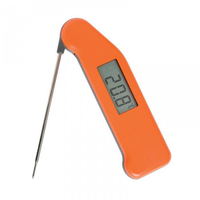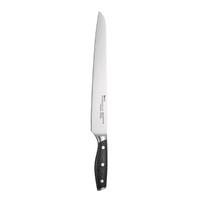How to roast pork with crackling - including the optimum roast pork cooking time per kg
How to roast pork - the simple way. This easy step-by-step recipe makes a delicious roast pork with perfect crunchy crackling...


Jessica Ransom
We have all the best tips for how to roast pork and get perfect crackling every time. We've also calculated the best time per kg so no matter the size of your cut, you'll have the best roast pork.
Pork is an affordable cut of meat compared to others and is very easy to carve, making it an excellent choice for a traditional Sunday lunch but it's also a great option for special occasions such as Christmas dinner or traditional Easter food.
The recipe in this simple guide will feed around six people. If that's too many for your lunch, we have plenty of suggestions for how to use up leftover pork. Alternatively, read our tips for how to cook pork chops if you fancy a tasty meal for one or two.
Food Writer Jessica Ransom says: "Whether you choose pork leg, shoulder, or loin, I'd recommend asking your butcher to debone the joint as it makes it much easier to carve. You can then stuff the joint and roll it up with a fruity, herby stuffing inside to infuse even more flavour into your roast."
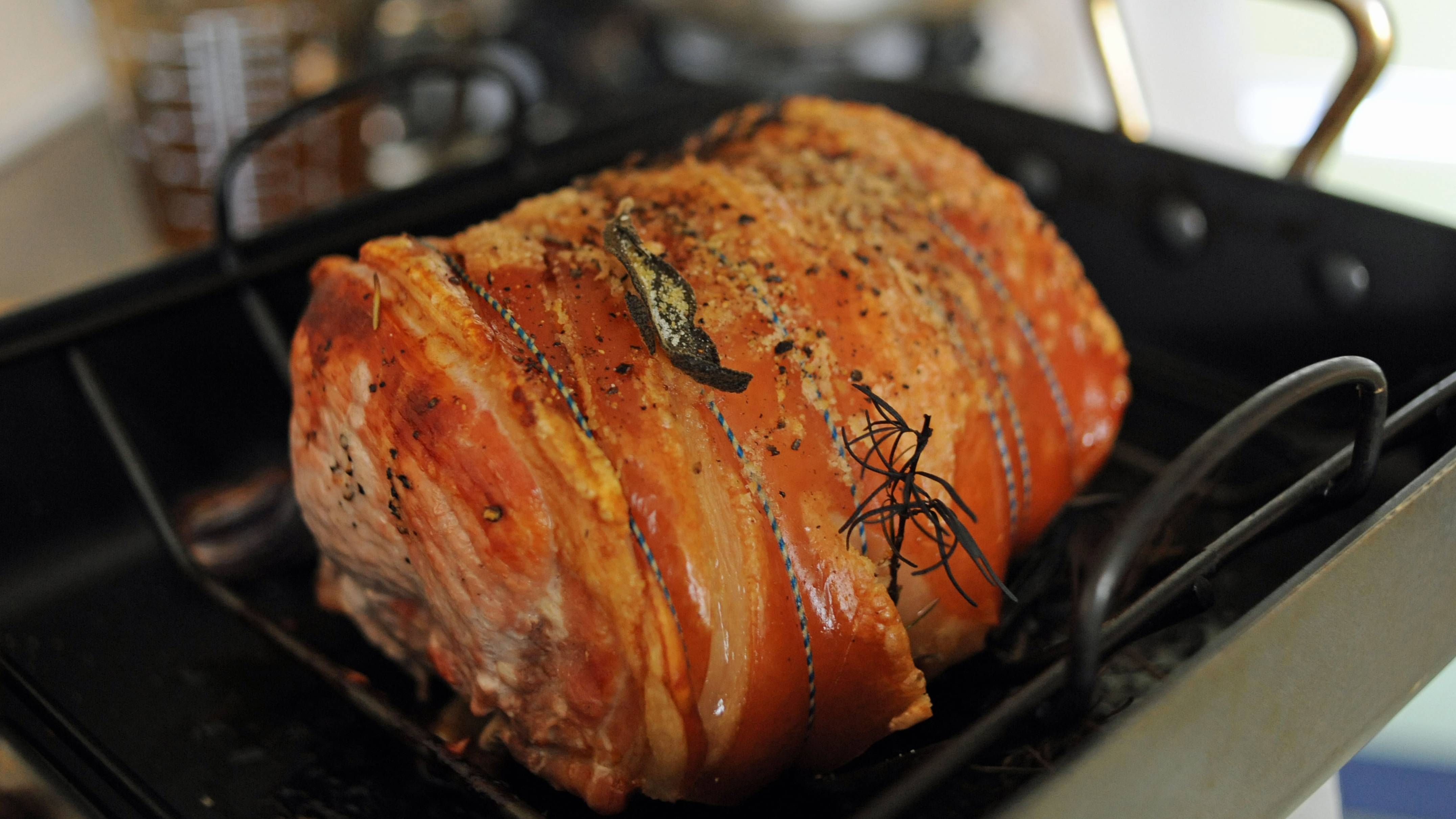
What is the best roast pork cooking time per kg?
We recommend 30 minutes on high heat plus 30 mins per 500g to cook a joint of pork. If you are used to lb rather than grams then 500g is just over 1lb.
For example, 1kg of a joint of pork will take 1 hour 30 minutes to cook. A larger 2kg joint would take 2 hours 30 minutes. The recipe in this guide uses a 2.3kg pork joint, this would have a total cook time of 2hrs 48 mins.
The high temperature at the beginning is important because it gives the crackling a good head start before cooking the meat. and prevents the joint from drying out.
GoodtoKnow Newsletter
Parenting advice, hot topics, best buys and family finance tips delivered straight to your inbox.
Food writer Jessica Ransom says: "I would position the pork in the top third of the oven for the first 30 minutes of cooking as this is the hottest area of the oven and should give your crackling a good head start. When you reduce the oven temperature you can move the shelf down so the joint is in the middle of the oven. You can always open the oven door for a minute or two to help reduce the temperature more quickly."
To check your roast pork is cooked through, we recommend using a meat thermometer. The UK Food Standards Agency says; "Pork needs to reach an internal temperature of 75C for 2 mins to kill off any harmful bacteria."
How to roast pork
This step-by-step guide has six steps and includes information on how to make apple gravy and get perfect crackling. We focus on cooking a pork leg joint and have calculated the best roast pork cooking time per kg. You can also apply these guidelines if you want to know how to roast pork belly.
Ingredients
- 2.3kg whole boneless pork leg joint, rolled
- 2 cloves garlic, peeled and thinly sliced
- 1-2tbsp sea-salt flakes
- 2 onions, peeled and sliced
- Handful of sage leaves
- 1 cooking apple
- 500ml pork stock
- 1tbsp plain flour
Step 1
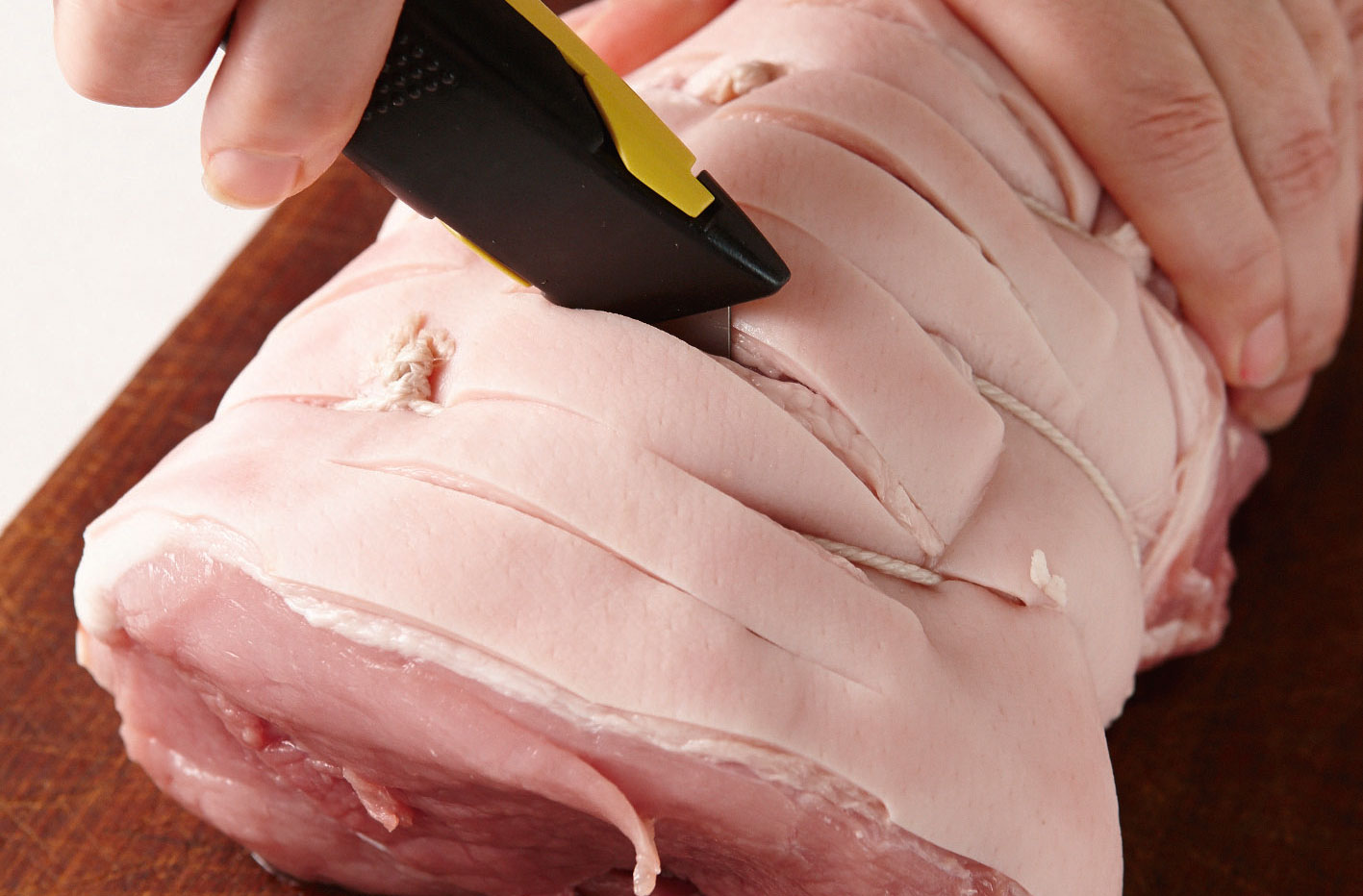
Use a sharp knife or craft knife to cut all the way through the pork skin to make parallel lines. These can be in addition to any lines already cut by the butcher. Take care not to cut any string otherwise the joint could unroll.
Former Food Editor Samuel Goldsmith says: “It’s really important that you don’t cut all the way through the skin into the meat or you will struggle to get really crispy crackling."
Step 2
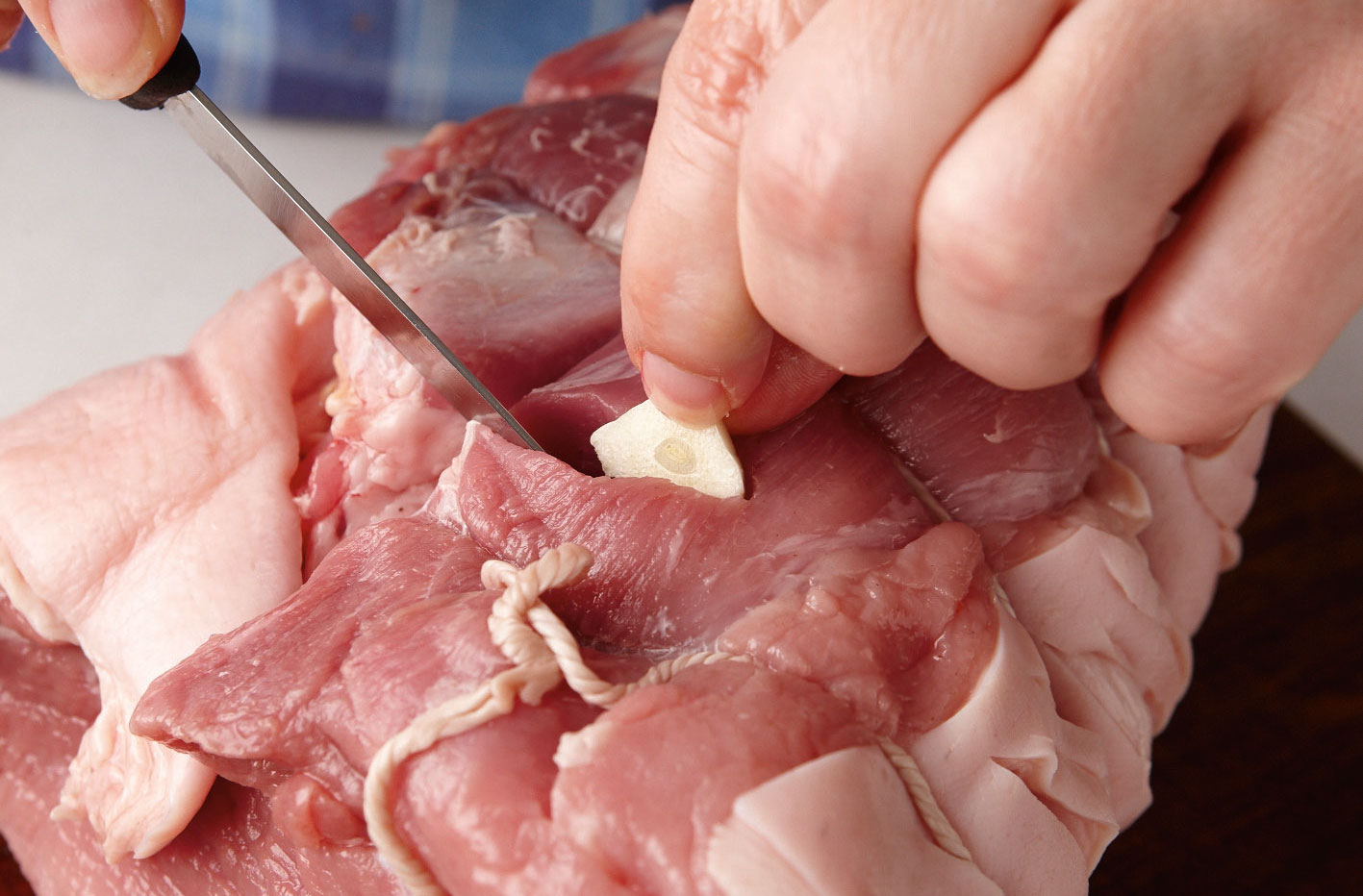
Turn the pork joint over and use a small knife to cut into the flesh. Insert slices of garlic into the meat and under the skin.
Elisa Roche, former food director at the Future Test Kitchen, advises to “pat the skin dry with a tea towel before you attempt to make good crackling." She adds: "Massage the herbs into the skin as if you were taking that pig to a spa. Caraway seeds are a also nice flavour pairing with pork.”
Step 3
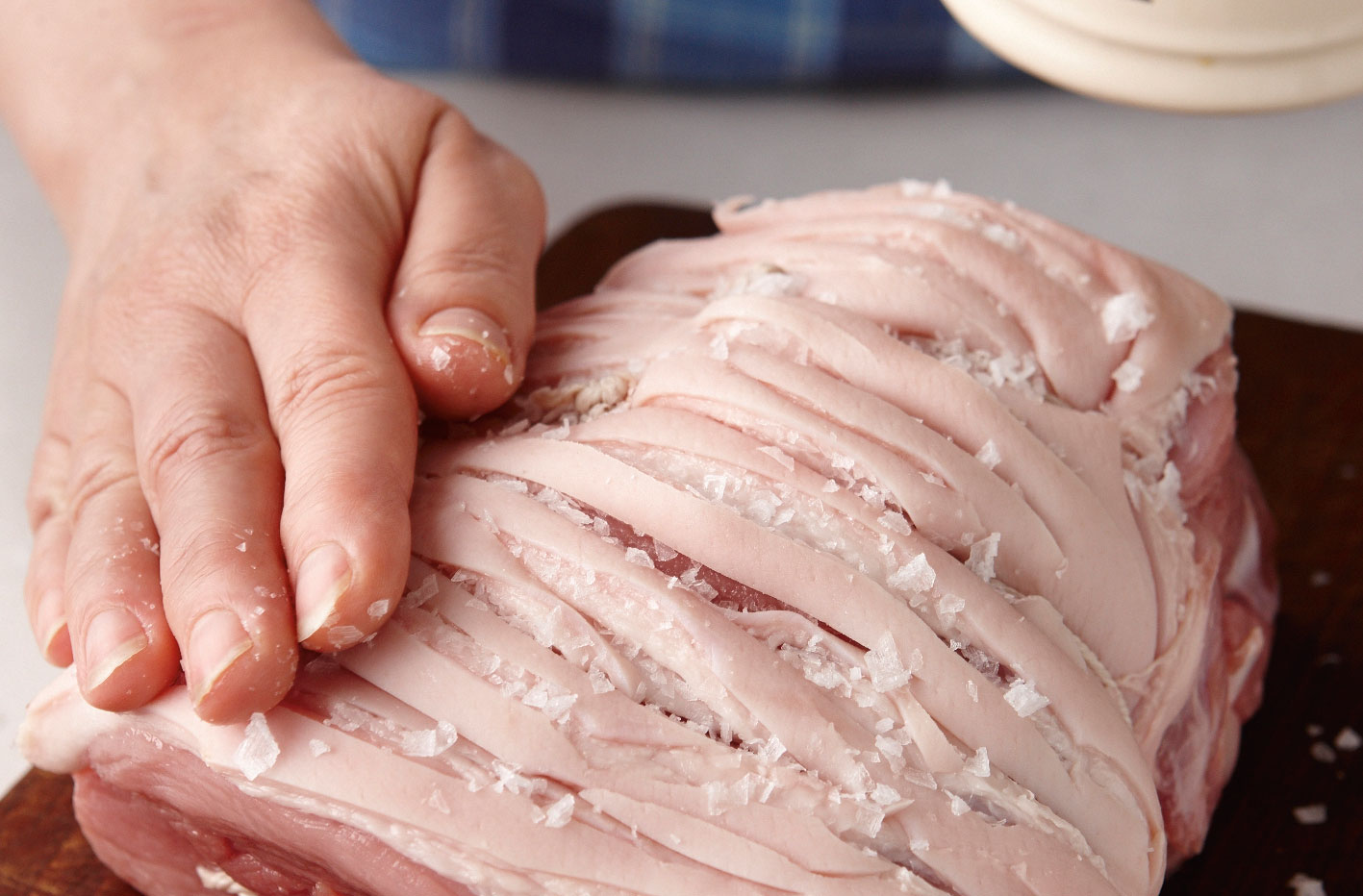
Pat the skin dry using kitchen paper or a clean tea towel then rub a generous amount of salt in.
If you have time, leave it in the fridge overnight (if you can), uncovered, for the skin to completely dry out. Deputy food editor Rose Fooks explains: “You should remove the meat from the fridge an hour before cooking so that it can come to room temperature. Pat the skin dry once again. This helps the crackling to crisp and the meat to cook evenly.”
Step 4
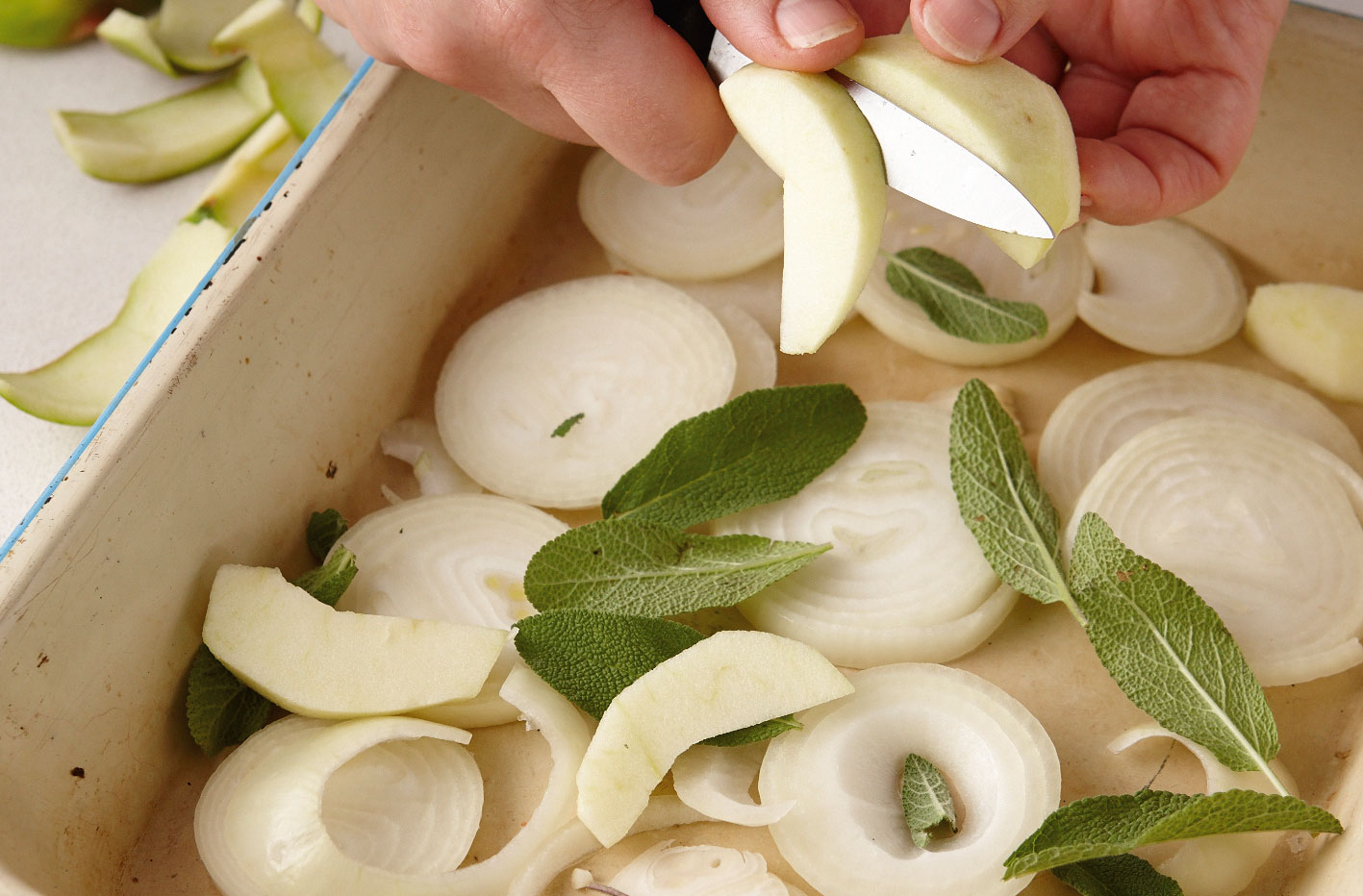
Set the oven to its highest setting. Spread the sliced onion and sage leaves out in a roasting tin. Quarter, peel and core the apple, cut into slices and scatter over the onions.
Step 5
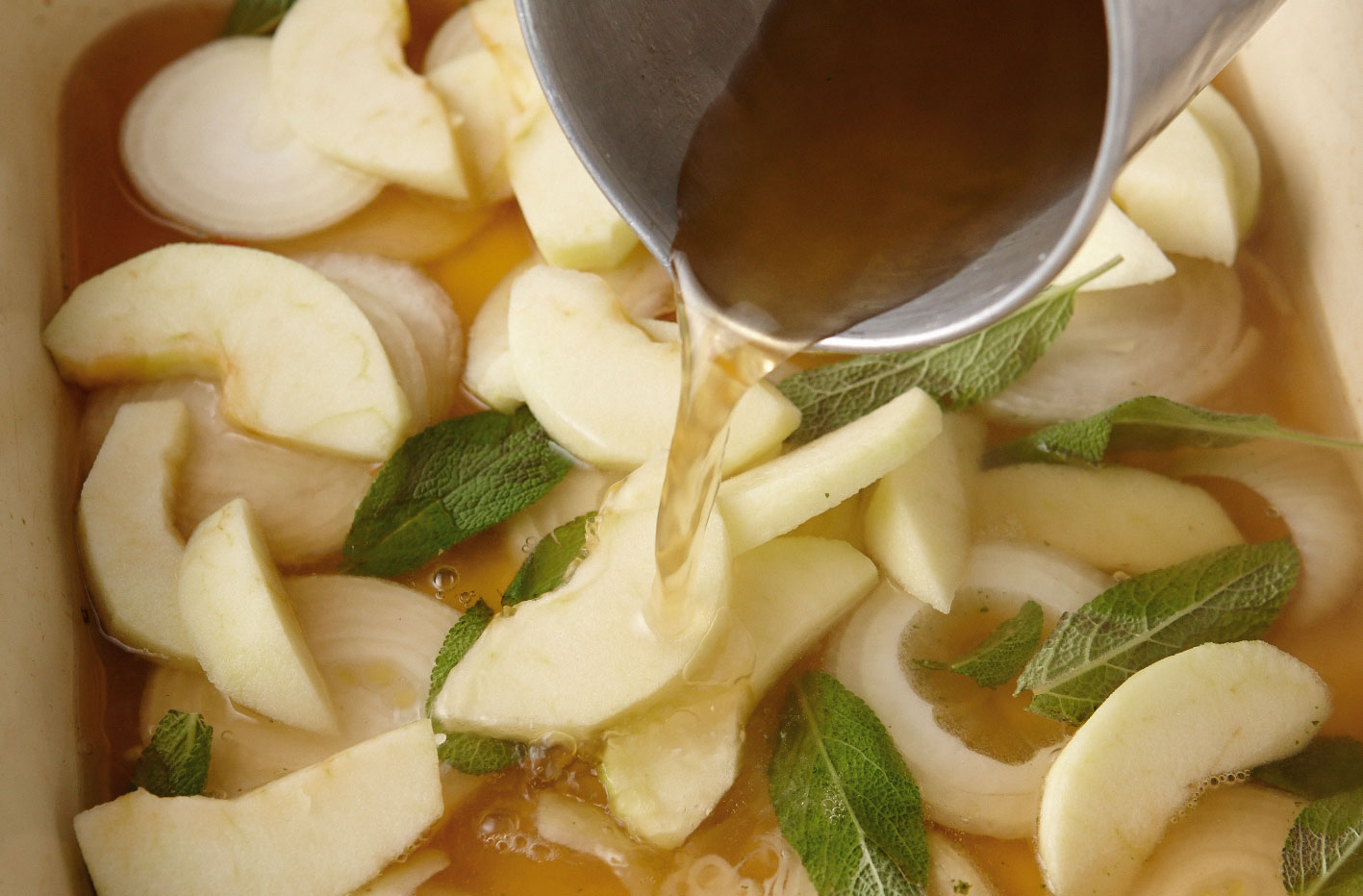
Pour in the stock. Place the pork on top. Roast for 30 mins, until the skin starts to crisp up, then reduce the oven temperature to 180C (160C fan, Gas 4), and cook for a further 2 hrs 18 mins. Remove the meat from the oven.
If the skin hasn’t formed a crackling our Deputy Food Editor Rose, advises to “cut the crackling off while you rest the meat and put it back in the top of the oven so it gets lovely and crispy.”
Step 6
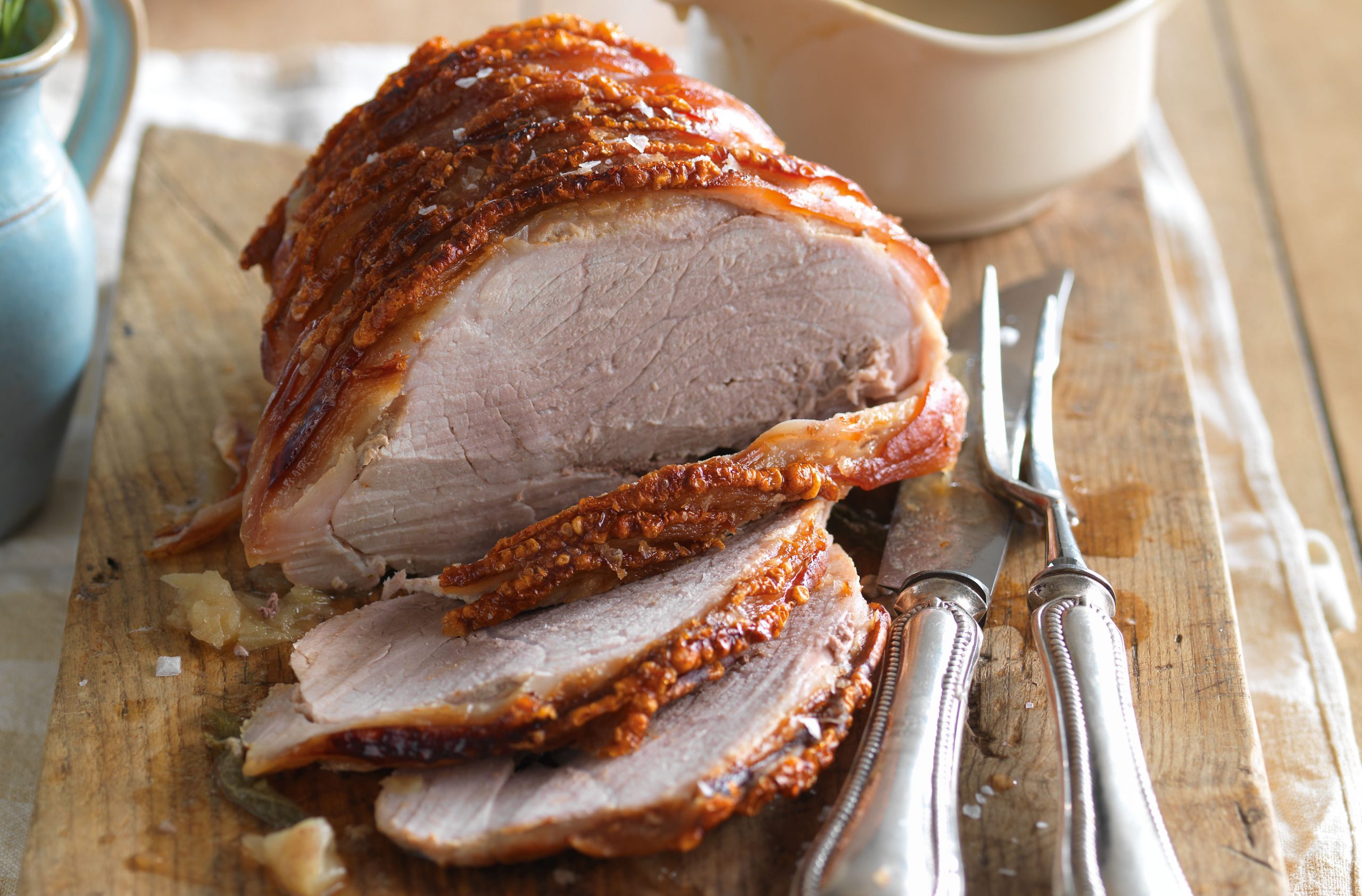
Transfer the pork to a warmed dish and leave it to rest for about 10-15 mins before slicing. Meanwhile, sprinkle the flour over the juices in the pan, then tip the juices into a jug, scraping as much from the bottom of the pan as possible, and use a stick blender to whizz until smooth (this may be done in a blender or food processor).
Return the mixture to a pan and bring it to a boil, stirring continually, and then simmer it for a few minutes to thicken slightly. If it’s too thick, add some boiling water. Season to taste, and serve with the meat.
Watch how to roast pork
Do you cover pork when roasting?
Never cover a pork joint if it has a layer of fatty skin and you want to make crackling. If you cover the skin it will become soft and chewy.
Some joints of meat require covering to ensure that they do not dry out or brown too heavily. This isn’t a problem with roast pork because the fat keeps it lovely and moist and you want the top of the skin to crisp up. If you remove the skin to make crackling separately then you might want to cover the meat to stop it from burning at the end of cooking.
Once you have finished cooking the roast pork, you might want to cover it to keep it warm when resting. Resting is important because it makes the meat juicy and more succulent.
We prefer to take the crackling off before covering it in foil so that any steam coming off the joint doesn’t cause the crackling to go soft.
What temperature should roast pork be cooked at?
Our Test Kitchen experts recommend that you give pork an initial heat blast at 220C (200C fan, Gas 8) for 30mins before reducing the heat to 180C (160C fan, Gas 4) for the rest of the roasting time (30mins per 500g/1lb). This is for pork roasting joints such as rolled shoulder, leg, or pork loin.
Some joints of pork, for example, pork belly, are cooked for much longer at the same temperature of 180C (160C fan, Gas 4). Jamie Oliver cooks his pork belly for up to 1hr per kg but gives a slightly longer heat blast at the beginning - around 40-50mins. Pork belly has more fat and a slow cook helps the fat to render down and melt, keeping the meat moist and tender.
If the skin hasn't become crispy by the end then you can put the heat up to 220C for a further 20-30mins but be careful not to overcook the meat. Our Deputy Food Editor Rose, likes to remove the skin from the meat at the end and put the skin back in the oven on its own (while the meat rests) at a higher temperature to make sure it's super crisp.
How do you make pork crackling?
The key to crackling is to make sure the skin is super dry. You can achieve this in a number of ways. Deputy Food Editor Rose likes to store the joint in the fridge overnight after scoring the skin to really dry the skin out and then get it out an hour before cooking to ensure an even cook.
Former food director Elisa Roche likes to pour boiling hot water over the skin before cooking then pat dry again with a tea towel before re-seasoning and roasting immediately.
If the skin is struggling to get crispy then you can, as Rose does, separate the skin from the meat and cook it at a higher temperature whilst the meat rests.

"When scoring the pork skin it's essential that you do not cut through the layer of fat and into the pork flesh. If you cut all the way through, moisture will get into contact with the crackling during the cooking and prevent it from becoming fully crisp."
Thermapen® Classic - Orange - View at Thermapen
Using a digital thermometer will enable you to cook this roast pork with confidence and prevent you from over-cooking it. Pork should be 75C - 80C after resting.
Professional X50 Contour Carving Knife - View at ProCook
A sharp, large knife is essential if you want to carve the pork into thin slices. We like this 25cm knife from ProCook which has a triple rivet handle for comfort and durability. The knife comes with a 25-year guarantee and is best washed by hand to prolong its quality.
You might also like our guide on how to cook ham. We've got tips for how to cook rice and how to cook sea bass if you're trying to incorporate more fish into your diet. The Hairy Bikers roast belly of pork is another great family dinner and makes a wonderful Sunday lunch option.

Former Assistant Headteacher, Samuel has a BSc in Food from the University of Birmingham and is also Co-Vice Chair of the Guild of Food Writers and a Trustee of 91 Ways CIC. His work has featured in national and international publications including Waitrose Food, Australian Delicious, and the LAD Bible Group. Samuel has also consulted on a number of best-selling food and drink books, and was a nutritional consultant for BBC’s Eat Well for Less.
- Jessica RansomSenior Food Writer
